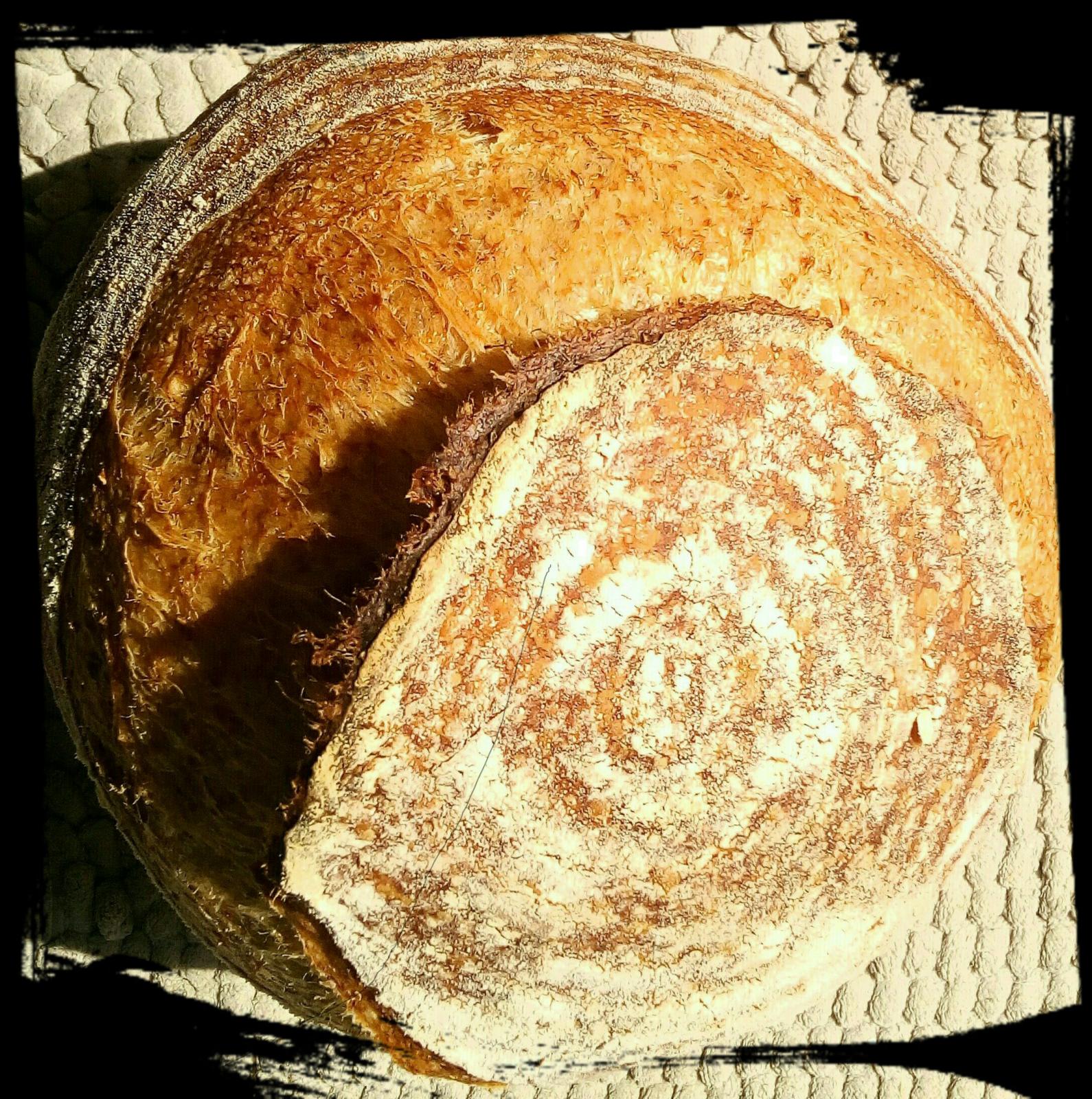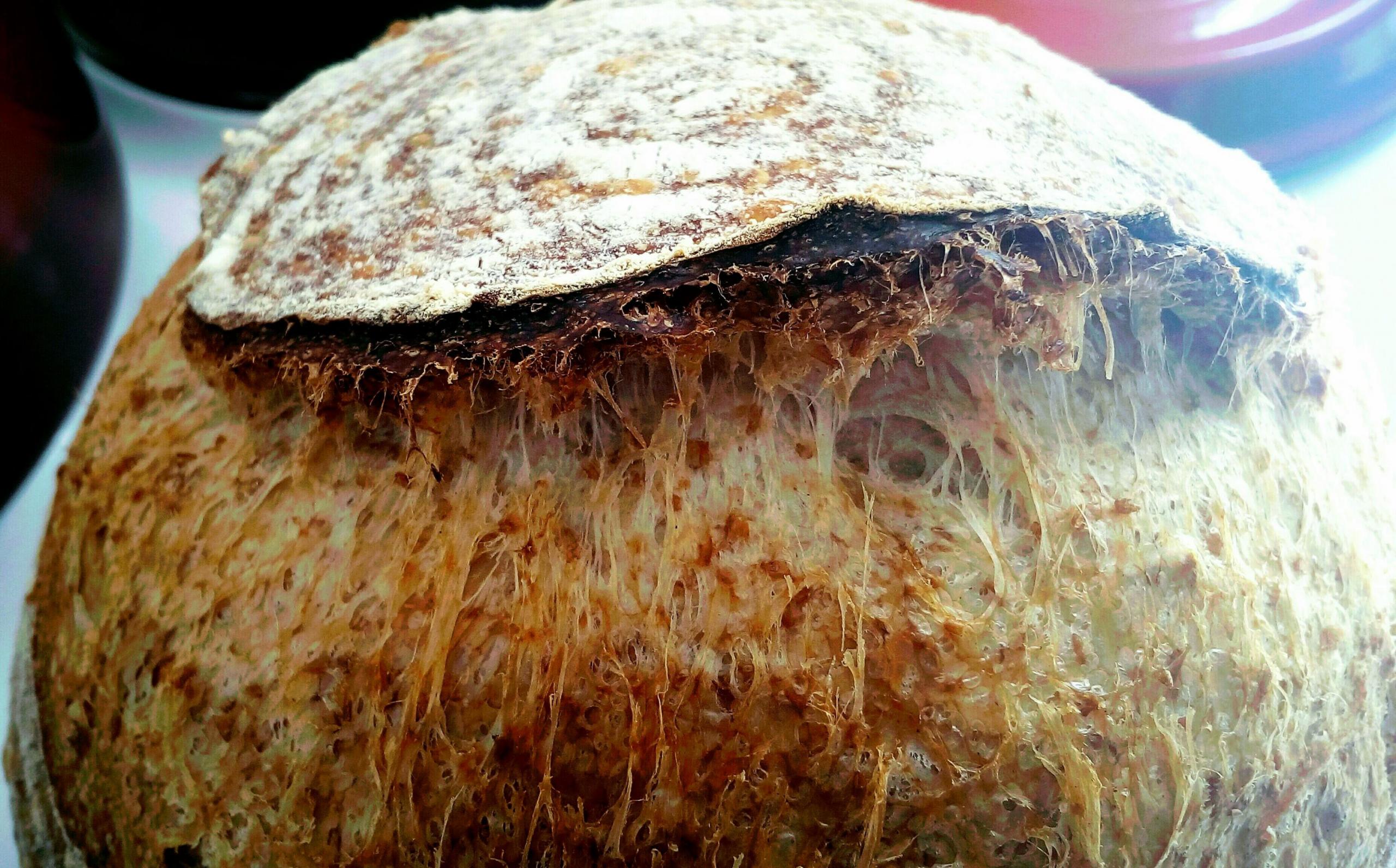This bake was made by combining two starters together namely spontaneous sourdough (type I) and sourwort (natural type II) in search of a more unique and complete taste profile along with good bread appearance.
The motive behind this test was based on the particulars of each one of the two ferments that I keep which possess very different but complimentary characteristics.
Sourwort, basically the hydrous outcome of natural anaerobic lacto-fermentation of malted grains at a temperature range close to 40C. These conditions discourage spontaneous yeast development and at the same time encourage native lactic acid bacteria to activate and produce mainly lactic acid and various other fermentation by-products that contribute to taste, dough development and subsequent yeast (wild and/or commercial) function.
Sourdough and because of the way I maintain it, lies at the other end of the spectrum. It is put to ferment at 18C aerobically, has a relatively stiff consistency encouraging the growth of yeast with robust leavening power and acetic taste.
You can tell immediately the difference between the two ferments by tasting them raw. One tastes more dairy the other more vinegary. Both aromatic each in its own sense. Here are some more in depth details of the two ferments used in this bake:
Sourwort
500g water ; 150g cracked spelt malt ; 1tsp a.c.vinegar 5°
Fermented anaerobically near 40C for 24hours. Then strained and letting its temperature fall gradually over the next 12-18 hours or so before transferring it to the fridge (I’ ve tried 10 days old sourwort straight from the fridge with success). I have noticed that by letting its temperature fall slowly until it reaches 18-20C it enhances its characteristics, probably by allowing other temperature specific bacteria species to be activated and contribute overall.
Sourdough
This is a spontaneous type I sourdough starter, maintained by feeding it once a day with organic whole rye flour, inoculation rate 50%, hydration 75% and fermenting temp 18C. Maybe once a day I would give it a good stir either because I use part of it to bake with or deliberately to promote aerobic conditions.
To sum up, by combining these two different natural starters the final dough contains fermentation products and by-products produced/collected over a very wide temperature range, all the way from 40C down to 4C when final dough is retarded for nearly 20 hours to proof. And it is exactly this wide temperature range that engages a broader microbial species number to get involved which in turn (I hope) will grant bread superior and more unique taste as compared to traditional methods using single preferments. And as far as structure is concerned, sourwort (apart from other factors) certainly contributes positively to openness/airiness/fluffiness of the crumb as it has been shown elsewhere.
The bread in the photos was made using these ingredient percentages:
304g RobinHood AllPurpose flour (p=13.2%)
16g Prefermented rye flour (sourdough 5%)
Overall hydration 75% ; sourwort 10% ; salt 2%
Plus soaked and strained bran flakes 4%
The Method
Involved a 3 hour extended autolyse of all the unfermented portion of flour with 65% hydration at 28-30C followed by mixing in the rest of the ingredients. Bulk 04:30 at 28-30C with lamination and folds (when needed) during the first 3 hours. Shaped and retarded (4C) in banneton for ~20 hours. Baked in DO as usual.
Taste
Well this is the most difficult part for me since English is not my first language but I’ll try. The taste came out as hypothesized having complexity and a variety of nuances from the stiff rye starter, presence of the lactic liquid and long autolyse. The characteristic spelt malt taste shows through in a pleasant way (makes it taste bready). Gentle sour after taste with a tad of sweetness. Definitely unique. These preliminary results encourage me to try it again, maybe with different flours, increased hydration for a more holey crumb, rye malt sourwort and what else pops in mind. Till next time…..


The rye sourdough type I
 Spelt Malt Sourwort. Nothing much to see really, just liquid.
Spelt Malt Sourwort. Nothing much to see really, just liquid.





